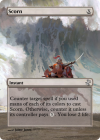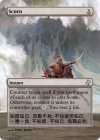You are using an out of date browser. It may not display this or other websites correctly.
You should upgrade or use an alternative browser.
You should upgrade or use an alternative browser.
Sharzad v4 - The Passion of Tarkir
- Thread starter safra
- Start date
Ok, so I have some thoughts about Tarkir's world-building that you may find interesting.
A lot of the cultures on Tarkir feel weird. While they have real-world inspirations, they aren't necessarily logical mirrors of their counterparts. Specifically:
1. The Abzan are supposed to be inspired by the Ottoman Empire... so why do they feel nothing like the Ottomans? While they may be masters of Siegecraft, that's really the only similarity. The Abzan is a nation of loosely-aligned clans huddling in desert citadels. They are a far cry from the masters of the eastern Mediterranean, with a capital in the City of the World's Desire like their inspiration.
2. Why are the Temur called "The Temur Frontier?" Is that supposed to be the name of the land the clan inhabits, or something else? The word "Frontier" implies an unsettled border region, not the home of a civilization. Is it an exonym?
3. The Sultai are supposed to be based on the Khmer Empire, but they feel more like a Northern Indian culture. Why? Likewise, did the Sultai actually build their monumental architecture? Their cities seem to be overgrown and falling into increasing disrepair. Despite the hordes of zombie servants to potentially keep things kept in shape, the Sultai seem content to let their cities decay. It's almost like they're occupying a kingdom built by someone else... put a pin in this one.
4. The Mardu Horde are supposed to be the Mongol Empire, but they feel like a tiny clan. They don't have any cities, or even anything resembling a structure. I guess we see a couple of tents that may belong to the Mardu in the Fate Reforged printing of Windscarred Crag, but that's about it. I don't think these people are an Empire; I think they're barely getting by.
5. The Jeskai seem pretty cool, and certainly the most coherent of the Clans from a flavor standpoint. Mystic Monks living in the Mountains. Cool. Their Monasteries are kept in shape, they seem to have a fair level of organization, and everything with these people makes sense... except, why do they live in the Mountains? I know this may seem silly, but if the biggest threat to the Humanoid civilizations of Tarkir was the Dragons, why build at higher altitudes closer to where the Dragons live? We know it can't be due to the cold because the main Dragon Brood antagonizing the Jeskai has icy breath. There must be more to this than meets the eye.
So here's the thing. I think a lot of the "issues" with the clans of Tarkir could actually be explained by considering the time before the first dragons. Tarkir is presented as a fairly "static" world, with the only major cultural differences between the distant past and the present being dictated by whether or not there are dragons. The clans are fairly similar both in the past when they are fighting the Dragons and in the present timeline where the Dragons are dead. However, draconic influences completely reshaped the clans in the timelines where the Dragons did not go extinct. I think that the world of Tarkir probably looked quite a bit different before the first Dragons arrived. Dragons are essentially natural disasters with wings, so it makes sense that their sudden introduction to the plane following the birth of Ugin as the dragon soul of Tarkir would have widespread consequences for the denizens of the plane.
So, what did Tarkir look like before the first Dragons? Here's what I think.
It all starts with the Abzan. The Abzan's inspiration, the Ottoman Empire, took on an impressive mix of titles from the various Anatolian rulers they displaced. Chief among them were Kayser-i Rûm (Ceaser of Rome) and Khan. The Abzan may have started as a small Beylik on the sandsteppe, but eventually expanded into an empire to encompass most of the plane. The Khan-Kaysers-i Tarkir would have conquered most of the habitable areas of the plane, with a few exceptions. First would be the monks of the Jeskai Way. Using mana leylines of the Highspire Mountains to their advantage, the early Jeskai were able to build impressive Monasteries, especially in the region surrounding Pearl Lake. Abzan siege beasts (including their famous Rhinos) were unable to traverse the mountains, making the fortresses virtually impenetrable. The next was the Kingdom of Gurmag. This

 faction would have inhabited the swamps of Gurmag, building impressive castles with the help of awesome war elephants. The Gurmag Empire Kingdom would be safe from the Khan-Kaysers in their swampy palaces but would have to be careful in using their limited supply of White mana to ward off the demons and snake people of the swamps. The "Temur" would not exist yet. Instead, the frontier would be a series of sparsely populated colonies sanctioned by the Abzan Empire. The Mardu Horde would have been entirely unimpressive during this time period, if they existed at all. The Mardu likely would have been bands of raiders, attacking imperial colonies in the frontier in lightning-fast raids. However, core Abzan territories would have been protected by the massive citadels we see in the present.
faction would have inhabited the swamps of Gurmag, building impressive castles with the help of awesome war elephants. The Gurmag Empire Kingdom would be safe from the Khan-Kaysers in their swampy palaces but would have to be careful in using their limited supply of White mana to ward off the demons and snake people of the swamps. The "Temur" would not exist yet. Instead, the frontier would be a series of sparsely populated colonies sanctioned by the Abzan Empire. The Mardu Horde would have been entirely unimpressive during this time period, if they existed at all. The Mardu likely would have been bands of raiders, attacking imperial colonies in the frontier in lightning-fast raids. However, core Abzan territories would have been protected by the massive citadels we see in the present.
Everything, of course, changes when the Dragons arrive. Ugin, son of the Ur-Dragon and brother to Nicol Bolas, was born to be the very embodiment of Dragons for the plane of Tarkir. After his birth, Dragon Tempests began spawning the draconic broods that would fundamentally transform Tarkir. The Abzan Empire would collapse. The once plane-wide mega-state being relegated to only a few cities behind walls bearing the names of long-forgotten Khan-Kaysers. In the chaos, the frontier settlements would be cut off from any resupply. Their fledgling cities would collapse into a series of clans, carving out just enough resources to survive the snowy, cold, wooded foothills. These people would eventually begin to call themselves "the Temur frontier." It is no coincidence that the only factions to have Ainok are the Abzan and the Temur– these two entities were one and the same in the distant past. In the Mountains, the Jeskai would largely continue as they did during the Imperial era, except now they had enemies who could actually attack the mountain monasteries they called home. Luckily, the magic that allowed the construction of their impossible monuments in the first place would serve as protection against draconic attacks in some capacity, strengthening the structures enough to keep the clan safe. The Gurmag Kingdom would not be so lucky. Silumgar and his brood of poison-breathing Dragons were perfectly suited to kill the Gurmag war elephants. The people of Gurmag would either be wiped out, or forced to submit to the Rakshasha and Naga. In either case, the great architects of Gurmag would be supplanted by Snake-Cults and scheming Rakshasha , the only record of their existence being slowly decaying great palaces. Finally, the Mardu would actually come out ahead in this world. It's possible that the origins of the Mardu are actually post-dragon, like the Temur: they may have been residents of Abzan cities in the plains that didn't have great walls like the desert fortresses. However, if they existed before the rise of the Dragons, they certainly would have been able to expand in both territory, wealth, and power by scavenging Imperial cities destroyed by draconic forces. The nomadic lifestyle of the Mardu meant that they would have been able to avoid constant Dragon raids simply by never staying in the same place. It's possible that Imperial refugees may have even taken up the saddle and bow and become part of the Mardu clan as well!
In either case, the five clans would eventually begin calling their leaders "Khans," a title used to show their claim to dominion over the plane of Tarkir. Although they would not be able to act on their claim during the time of the Dragons, this would not always be the case. In the timeline where the Dragons go extinct, the Khans fight each other in an eternal war to reclaim rulership of Tarkir. Although the title of "Kayser" may have been lost, the drive for domination would remain. Unfortunately for the Abzan, their sharp decline from power during the reign of Dragons meant that they no longer had the population necessary to defeat the younger clans. They almost take the place of the Byzantine Empire or late Ottoman Empire from our world, as the "sick man of Tarkir."
In the timeline where Dragons survive and take control of the plane for themselves, the title of "Khan" too is forgotten along with it's "Kayser" counterpart, as the world slowly forgets the time of the clans and the Empire...
A lot of the cultures on Tarkir feel weird. While they have real-world inspirations, they aren't necessarily logical mirrors of their counterparts. Specifically:
1. The Abzan are supposed to be inspired by the Ottoman Empire... so why do they feel nothing like the Ottomans? While they may be masters of Siegecraft, that's really the only similarity. The Abzan is a nation of loosely-aligned clans huddling in desert citadels. They are a far cry from the masters of the eastern Mediterranean, with a capital in the City of the World's Desire like their inspiration.
2. Why are the Temur called "The Temur Frontier?" Is that supposed to be the name of the land the clan inhabits, or something else? The word "Frontier" implies an unsettled border region, not the home of a civilization. Is it an exonym?
3. The Sultai are supposed to be based on the Khmer Empire, but they feel more like a Northern Indian culture. Why? Likewise, did the Sultai actually build their monumental architecture? Their cities seem to be overgrown and falling into increasing disrepair. Despite the hordes of zombie servants to potentially keep things kept in shape, the Sultai seem content to let their cities decay. It's almost like they're occupying a kingdom built by someone else... put a pin in this one.
4. The Mardu Horde are supposed to be the Mongol Empire, but they feel like a tiny clan. They don't have any cities, or even anything resembling a structure. I guess we see a couple of tents that may belong to the Mardu in the Fate Reforged printing of Windscarred Crag, but that's about it. I don't think these people are an Empire; I think they're barely getting by.
5. The Jeskai seem pretty cool, and certainly the most coherent of the Clans from a flavor standpoint. Mystic Monks living in the Mountains. Cool. Their Monasteries are kept in shape, they seem to have a fair level of organization, and everything with these people makes sense... except, why do they live in the Mountains? I know this may seem silly, but if the biggest threat to the Humanoid civilizations of Tarkir was the Dragons, why build at higher altitudes closer to where the Dragons live? We know it can't be due to the cold because the main Dragon Brood antagonizing the Jeskai has icy breath. There must be more to this than meets the eye.
So here's the thing. I think a lot of the "issues" with the clans of Tarkir could actually be explained by considering the time before the first dragons. Tarkir is presented as a fairly "static" world, with the only major cultural differences between the distant past and the present being dictated by whether or not there are dragons. The clans are fairly similar both in the past when they are fighting the Dragons and in the present timeline where the Dragons are dead. However, draconic influences completely reshaped the clans in the timelines where the Dragons did not go extinct. I think that the world of Tarkir probably looked quite a bit different before the first Dragons arrived. Dragons are essentially natural disasters with wings, so it makes sense that their sudden introduction to the plane following the birth of Ugin as the dragon soul of Tarkir would have widespread consequences for the denizens of the plane.
So, what did Tarkir look like before the first Dragons? Here's what I think.
It all starts with the Abzan. The Abzan's inspiration, the Ottoman Empire, took on an impressive mix of titles from the various Anatolian rulers they displaced. Chief among them were Kayser-i Rûm (Ceaser of Rome) and Khan. The Abzan may have started as a small Beylik on the sandsteppe, but eventually expanded into an empire to encompass most of the plane. The Khan-Kaysers-i Tarkir would have conquered most of the habitable areas of the plane, with a few exceptions. First would be the monks of the Jeskai Way. Using mana leylines of the Highspire Mountains to their advantage, the early Jeskai were able to build impressive Monasteries, especially in the region surrounding Pearl Lake. Abzan siege beasts (including their famous Rhinos) were unable to traverse the mountains, making the fortresses virtually impenetrable. The next was the Kingdom of Gurmag. This
Everything, of course, changes when the Dragons arrive. Ugin, son of the Ur-Dragon and brother to Nicol Bolas, was born to be the very embodiment of Dragons for the plane of Tarkir. After his birth, Dragon Tempests began spawning the draconic broods that would fundamentally transform Tarkir. The Abzan Empire would collapse. The once plane-wide mega-state being relegated to only a few cities behind walls bearing the names of long-forgotten Khan-Kaysers. In the chaos, the frontier settlements would be cut off from any resupply. Their fledgling cities would collapse into a series of clans, carving out just enough resources to survive the snowy, cold, wooded foothills. These people would eventually begin to call themselves "the Temur frontier." It is no coincidence that the only factions to have Ainok are the Abzan and the Temur– these two entities were one and the same in the distant past. In the Mountains, the Jeskai would largely continue as they did during the Imperial era, except now they had enemies who could actually attack the mountain monasteries they called home. Luckily, the magic that allowed the construction of their impossible monuments in the first place would serve as protection against draconic attacks in some capacity, strengthening the structures enough to keep the clan safe. The Gurmag Kingdom would not be so lucky. Silumgar and his brood of poison-breathing Dragons were perfectly suited to kill the Gurmag war elephants. The people of Gurmag would either be wiped out, or forced to submit to the Rakshasha and Naga. In either case, the great architects of Gurmag would be supplanted by Snake-Cults and scheming Rakshasha , the only record of their existence being slowly decaying great palaces. Finally, the Mardu would actually come out ahead in this world. It's possible that the origins of the Mardu are actually post-dragon, like the Temur: they may have been residents of Abzan cities in the plains that didn't have great walls like the desert fortresses. However, if they existed before the rise of the Dragons, they certainly would have been able to expand in both territory, wealth, and power by scavenging Imperial cities destroyed by draconic forces. The nomadic lifestyle of the Mardu meant that they would have been able to avoid constant Dragon raids simply by never staying in the same place. It's possible that Imperial refugees may have even taken up the saddle and bow and become part of the Mardu clan as well!
In either case, the five clans would eventually begin calling their leaders "Khans," a title used to show their claim to dominion over the plane of Tarkir. Although they would not be able to act on their claim during the time of the Dragons, this would not always be the case. In the timeline where the Dragons go extinct, the Khans fight each other in an eternal war to reclaim rulership of Tarkir. Although the title of "Kayser" may have been lost, the drive for domination would remain. Unfortunately for the Abzan, their sharp decline from power during the reign of Dragons meant that they no longer had the population necessary to defeat the younger clans. They almost take the place of the Byzantine Empire or late Ottoman Empire from our world, as the "sick man of Tarkir."
In the timeline where Dragons survive and take control of the plane for themselves, the title of "Khan" too is forgotten along with it's "Kayser" counterpart, as the world slowly forgets the time of the clans and the Empire...
And indeed I do! I'll reply to your numbered points and then more generally to your post.OK, so I have some thoughts about Tarkir's world-building that you may find interesting.
1), 3), 4): yeah, totally. A lot of magic 'real world' flavour and costuming and cultural 'look' feels like it's just there as part of the styleguide for art commissioning. The Mardu/Kolaghan Horde feels like it's shaped like hunter-gatherers but dressed like an army; the Sultai have way too many normal alive guys with menial jobs for a zombie slave empire; the Abzan are not your beloved 'Otterman Empire' at all and instead are kind of a grab bag of desert and steppe and castle stuff all thrown together with a landlord-matte-white coat of Good Guy Paint. This wouldn't necessarily matter - it's similar to Ixalan's grab bag of Mesoamerican tropes - but I thought Amonkhet did a better job of conveying a bigger world than Ixalan, and I think sticking mostly to fantasy Ancient Egyptian tropes while mixing it up with a single big intrusion into that fantasy realm is (a big?) part of that.....a selfish thing to think! but maybe true! yay me yay sharzad
2) it's interesting, the "temur frontier", yeah. fascinating maybe. Good name. In a way it implies, I think, that there are unknown hinterlands but the temur lands represent the boundary of our known world? Or that the Temur have been banished, exiled, driven by the presence of game to inhabit, the wild frontiers of the plane....it could, depending on how big tarkir is, mean any number of things! It's nice that it's ambiguous, because it means semi-invested players aren't getting it wrong somehow, and I think that mystery is part of what makes magic's storytelling-through-gameplay so good. It can sing a certain note in one game and a slightly different note in another while still singing the same song....
5) mountains are great places for temples. the meditatin's good and the air's thin and the view is awesome. I visited a couple monasteries in Mongolia with 108 steps up to the temple and the walk takes forever and there's all these signs with ideas and religious stuff for you to reflect on while you're walking up the mountain. pretty cool imo. that the dragons fly doesn't really mean that people can't be on mountains imo. It's just too restrictive for the expansive worldbuilding that gets created in limited.
I also think that the dragon threat to tarkir wasn't like, individual, right? It's systemic, about the ability of civilization to not just endure but thrive under this constant indefatigable threat (of hasty dragons i guess), so i don't think individual monks getting individually munkch'd is that big a deal.
I also adore your fanfic here, it's dope. My favourite parts are the layered history, the scattered shards of a plane-spanning empire, that the ancient Sultai inhabit (oddly decrepit) palaces even older still - how FromSoft, how Troy-was-ten-cities-on-top-of-each-other!! So dope! I really want to incorporate some of this 'what was Tarkir like before even Ugin's awakening and the dragonstorms' stuff into Sharzad. I said more privately but this is what I'll say here per the arthur conan doyle method of fic crit. : )
Here's a card I designed tonight which Chris T said is very me. Please enjoy my weirdest counterspell yet:
Attachments
Last edited:
Onderzeeboot
Ecstatic Orb
Oh no, all that text and a teaser, only for the image to not work 
Chris Taylor
Contributor
Onderzeeboot
Ecstatic Orb
That is a really wild counterspell, my color pie alarm bells are going berserk XD
Chris Taylor
Contributor
Like I said, it couldn't exist anywhere elseThat is a really wild counterspell, my color pie alarm bells are going berserk XD
But like, here we have green spell pierce and the cube didn't collapse
talked this over tonight after previously considering it (see below). I think I don't like 4x12 with my lands in the land box situation; i thought, oh, it's fun to see each pack exactly twice, but isn't some of the tension of 15-card-packs that, like, some of what you see won't wheel?so, therefore, in a 288-card 'normal draft' for 6, in total we should open:
[...]48 custom cards. That's a couple more "custom" cards than I think I realized a full draft would entail; it's, like, a sixth of the draft (16.6 recurring %). I guess that's okay?
(6 by 48 was 288, out of ~460, ~60% of the cube drafted for 6 players, ~83% for 8, ' oops, let me grab some cards' for 10 players)
after a bit of bot drafting on cubeartisan, i think i'm gonna try four packs of ten, in the hope that it'll curtail a little bit of colour greed and force players to lean harder on synergy. I don't want the draft to take forever, y'know? It was about an hour to draft with my new playgroup (6) recently, and then deck construction after that...
My reasoning: if people play ~16 lands, that's 24 spells and a handful of lands in the draft, which now that I type it kind of makes it obvious how silly it was to just double that number, oops....and 40's the same number of cards to see as to put in your deck, which has a pleasing symmetry now that I think of it...I've felt that this 'valve' was a little too loose, and I'd like to tighten it, but I wonder if there's some other arrangement, like 5x9, some big packs but "burn" strategy, that might be better. So....I'm interested - what are your thoughts on pack size, when fixing lands are a complete non-entity in draft, but you can still play any colours you want?
Last edited:
Usually, I just draft 4 packs of 16 when I have only 6 players. No reason not to draft the whole Cube!talked this over tonight after previously considering it (see below). I think I don't like 4x12 with my lands in the land box situation; i thought, oh, it's fun to see each pack exactly twice, but isn't some of the tension of 15-card-packs that, like, some of what you see won't wheel?
(6 by 48 was 288, out of ~460, ~60% of the cube drafted for 6 players, ~83% for 8, ' oops, let me grab some cards' for 10 players)
after a bit of bot drafting on cubeartisan, i think i'm gonna try four packs of ten, in the hope that it'll curtail a little bit of colour greed and force players to lean harder on synergy. I don't want the draft to take forever, y'know? It was about an hour to draft with my new playgroup (6) recently, and then deck construction after that...
My reasoning: if people play ~16 lands, that's 24 spells and a handful of lands in the draft, which now that I type it kind of makes it obvious how silly it was to just double that number, oops....and 40's the same number of cards to see as to put in your deck, which has a pleasing symmetry now that I think of it...I've felt that this 'valve' was a little too loose, and I'd like to tighten it, but I wonder if there's some other arrangement, like 5x9, some big packs but "burn" strategy, that might be better. So....I'm interested - what are your thoughts on pack size, when fixing lands are a complete non-entity in draft, but you can still play any colours you want?
Intent Isn't In Magic
On my way to 1-3'ing a Traditional Draft of OTJ, Arena offers me a lore tooltip. The world will feel bigger, they think, if I get to read what Worldbuilding and Creative said about the major and minor factions on the plane. In the past I've thought they did this okay but the OTJ ones feel especially clunky to me and I wanted to puzzle out why.
Like the other factions, these guys were initially conceived of as a "gang"; I wouldn't be surprised if the need to do Western Movie stuff necessitates a powerful economic actor that "the entire town [belongs to]" who "settle for the letter [of the law]" instead of its spirit. It's a little 'cops and robbers', a little playground-roleplay, compared to the grim reality of mafia extortion ft. a corrupt sheriff, corrupt politics, they should be doing so much more extortion. And some of that's there, but it never felt clear to me why the Sterling Company would like to "bring order to the chaos of Thunder Junction" in the first place. The flavour keeps telling us that the -aligned Hellspur Gang are the worst fuckers on the plane, a real "no, no, don't do that, if you shoot him, you'll just make him mad" crew of mean mugs who'd kill you for your gold teeth. Our modern cops get away with being the only and baddest gang around but that's because there aren't really other gangs to compete with / the other gangs aren't armed and funded by the coffers of the state. The crooked lawman thing doesn't feel like it should work in a world that's as empty as we're being asked to believe the desert is, where the Hellspurs seem so established and to have an ace up their sleeve that the 'corrupt lawmen' certainly don't, in their gleaming city of pine and extortion (Prosperity, not Omenport, where the people they could exploit live). And the other gangs are even worse!!
-aligned Hellspur Gang are the worst fuckers on the plane, a real "no, no, don't do that, if you shoot him, you'll just make him mad" crew of mean mugs who'd kill you for your gold teeth. Our modern cops get away with being the only and baddest gang around but that's because there aren't really other gangs to compete with / the other gangs aren't armed and funded by the coffers of the state. The crooked lawman thing doesn't feel like it should work in a world that's as empty as we're being asked to believe the desert is, where the Hellspurs seem so established and to have an ace up their sleeve that the 'corrupt lawmen' certainly don't, in their gleaming city of pine and extortion (Prosperity, not Omenport, where the people they could exploit live). And the other gangs are even worse!!
To me, the issue feels like it's one of intent. In the real world, in well-plotted fiction, characters are motivated by, ultimately, very straightforward concerns - shelter, food, money, love, fear, revenge, power, pique, pain - that feel absent from the Sterling Company, the Freestriders, and ultimately I gotta say also from the Jace Vraska Oko Tinybones Rakdos crew.
Part of this is, obviously, because all this story stuff has to be legible to kids who buy only a couple packs' worth of cards. There's not a lot of room for the interesting stuff at the fringes of the setting and genre (like the anticolonial east german osterns; check out Sons of the Great Bear and Chingachgook the Great Snake; in both movies our heroes achieve their goals by setting aside domestic political differences to unite against the white colonists). And there's even less room for the do-gooder heroes to exist in the same place as the crooked cop city - because that isn't the conflict of the set, it's not epic enough, so for some reason the corruption is an entire train line away from all the marks it would naturally prey on. Feels like the Baron built his city in the wrong fuckin' place! But it preserves the road trip from a bustling migrant port to a polished but deadly cop city to a mysterious abandoned Vault where a big epic showdown gets to take place. I guess that's fine, probably it's necessary, but again, nobody feels like they're motivated by real, emotional, human desires. And I do think they could be - if the Jace and Vraska relationship stuff were more explicit, if the quest for the Vault was a throughline between the disparate goals of the various do-gooders and the heist crew, if we got to see a sorcery that represents ral zarek teleporting incredible amounts of metal and glass and workers through an Omenpath to build his little train line and power relays, etc, etc...the story arc of the set itself is too far removed from the emotional goals of the characters, IMO, and I think this is a significant failing for a story set in this kind of homage to stories about the Wild West.
Obviously I could do it better and that's my contention. But I'm surprised WotC focused so hard on the stuff they caught flak for anyway rather than telling intuitive emotional stories about love, redemption, bravery, co-parenting a furry with your ex husband Criss Angel, blowing up a train line and pillaging like al-Lawrence (okay, the Great Train Heist does win the game and make a bunch of treasure, fair enough)...like everyone else has said everywhere else, the cards are fun but the setting is too empty, the character motivations don't scan, and the throughline of the Vault isn't a "throughline" at all (it's on about a dozen cards, both cardnames and flavour text, but my experience of the set did not feel like the Vault was at the centre of everything else, and I think it should have been, and I think what we got is worse than what I imagine).
On my way to 1-3'ing a Traditional Draft of OTJ, Arena offers me a lore tooltip. The world will feel bigger, they think, if I get to read what Worldbuilding and Creative said about the major and minor factions on the plane. In the past I've thought they did this okay but the OTJ ones feel especially clunky to me and I wanted to puzzle out why.
The Sterling Company believes that money and political hierarchy is the the best way to bring order to the chaos of Thunder Junction. Though they wrote the plane's laws, the only law that truly matters to the company is "never stand in the way of profit."[3] Anyone who doesn't conform to this belief is met with banishment.[4]
Like the other factions, these guys were initially conceived of as a "gang"; I wouldn't be surprised if the need to do Western Movie stuff necessitates a powerful economic actor that "the entire town [belongs to]" who "settle for the letter [of the law]" instead of its spirit. It's a little 'cops and robbers', a little playground-roleplay, compared to the grim reality of mafia extortion ft. a corrupt sheriff, corrupt politics, they should be doing so much more extortion. And some of that's there, but it never felt clear to me why the Sterling Company would like to "bring order to the chaos of Thunder Junction" in the first place. The flavour keeps telling us that the
Oh good lord. At least the morals are as black-and-white as a John Ford movie, but how is this a faction? We're told that "freestriders took to patrolling around the Omenpaths, protecting new arrivals from the robbers and charlatans[...]" who would otherwise take advantage of these fresh-off-the-portal marks. But we don't see a vignette of what this emotionally means for those immigrants so I feel like it's just a 'white hat' kind of 'good guy' 'thing to do'. Just like the oddly passive unstoppable supergang, the oddly powerful "lawmen" whose law only penetrates to a couple of large encampments, and the "heist crew" who don't know how they'll split the profits, these guys feel half-sketched rather than observed.The Freestriders are the smallest and least obvious faction, but they're our white hats, our good guy vigilantes who aren't in it for the money.
To me, the issue feels like it's one of intent. In the real world, in well-plotted fiction, characters are motivated by, ultimately, very straightforward concerns - shelter, food, money, love, fear, revenge, power, pique, pain - that feel absent from the Sterling Company, the Freestriders, and ultimately I gotta say also from the Jace Vraska Oko Tinybones Rakdos crew.
Part of this is, obviously, because all this story stuff has to be legible to kids who buy only a couple packs' worth of cards. There's not a lot of room for the interesting stuff at the fringes of the setting and genre (like the anticolonial east german osterns; check out Sons of the Great Bear and Chingachgook the Great Snake; in both movies our heroes achieve their goals by setting aside domestic political differences to unite against the white colonists). And there's even less room for the do-gooder heroes to exist in the same place as the crooked cop city - because that isn't the conflict of the set, it's not epic enough, so for some reason the corruption is an entire train line away from all the marks it would naturally prey on. Feels like the Baron built his city in the wrong fuckin' place! But it preserves the road trip from a bustling migrant port to a polished but deadly cop city to a mysterious abandoned Vault where a big epic showdown gets to take place. I guess that's fine, probably it's necessary, but again, nobody feels like they're motivated by real, emotional, human desires. And I do think they could be - if the Jace and Vraska relationship stuff were more explicit, if the quest for the Vault was a throughline between the disparate goals of the various do-gooders and the heist crew, if we got to see a sorcery that represents ral zarek teleporting incredible amounts of metal and glass and workers through an Omenpath to build his little train line and power relays, etc, etc...the story arc of the set itself is too far removed from the emotional goals of the characters, IMO, and I think this is a significant failing for a story set in this kind of homage to stories about the Wild West.
Obviously I could do it better and that's my contention. But I'm surprised WotC focused so hard on the stuff they caught flak for anyway rather than telling intuitive emotional stories about love, redemption, bravery, co-parenting a furry with your ex husband Criss Angel, blowing up a train line and pillaging like al-Lawrence (okay, the Great Train Heist does win the game and make a bunch of treasure, fair enough)...like everyone else has said everywhere else, the cards are fun but the setting is too empty, the character motivations don't scan, and the throughline of the Vault isn't a "throughline" at all (it's on about a dozen cards, both cardnames and flavour text, but my experience of the set did not feel like the Vault was at the centre of everything else, and I think it should have been, and I think what we got is worse than what I imagine).
Last edited:
YOU CAN RETURN TO TARKIR BUT YOU CAN NEVER GO HOME AGAIN
So, 11 years later, we're getting another Tarkir expansion! And I'm already so hyped.
(announcement video) (WotC product page) (chronological spoiler)
My reaction to the announcement of the set last year was 'AWESOME' and I've been waiting for this one for a while.
Spoiler season opened with a new Sarkhan, better flavour for an old mechanic ('if you control[...]', a mechanic I adapted as "Dragonlord's Will -- ", is now the thrilling and evocative 'behold a Dragon'), and, of all things, a new Mox that doesn't work on turn 1 (and I'd be remiss not to mention the Siege Rhino glow-up.)
A new Tarkir set brings me three things, I think. First, and most obviously, new cards to play with! This set is going to be one of the biggest contributors to Sharzad ever, maybe, since it's also bridging decade-old-flavour with a modern power level (as opposed to Sharzad's Legacy power level, but hey, they've spoiled some cards I'm absolutely going to play with). Second, there's some exciting lore stuff I get to syncretize with the story I'm already telling about Sarkhan's Passion (more on this later), and finally, even if there are cards whose power levels aren't quite ready to hang with Orcish Bowmasters, free interaction, and Show and Tell...with a slight tweak here, a borrowing of a mechanic there, or even repurposing art from cards that weren't tuned for Constructed but had some really cool images, I'll have a lot more 'raw material' from which to sculpt that dragon plane flavour on my custom cards.
So, 11 years later, we're getting another Tarkir expansion! And I'm already so hyped.
(announcement video) (WotC product page) (chronological spoiler)
MARK ROSEWATER, breathlessly enthusiastic, ca 2024: Okay, so, ten years ago, we first visited Tarkir! And we learned it was the home planet of Sarkhan Vol, and all the dragons had been killed off, and the Khans run wild, but then Sarkhan went back in time, and changed the timeline! And now Dragons reign supreme! So, one of our guidelines for designing this set was the mantra, 'the best of both worlds'. Do you like wedge play? You'll get it. Do you like dragons? You'll get that as well. And so it is, uh, everything you loved about Khans and Dragons of Tarkir mashed together!
My reaction to the announcement of the set last year was 'AWESOME' and I've been waiting for this one for a while.
Spoiler season opened with a new Sarkhan, better flavour for an old mechanic ('if you control[...]', a mechanic I adapted as "Dragonlord's Will -- ", is now the thrilling and evocative 'behold a Dragon'), and, of all things, a new Mox that doesn't work on turn 1 (and I'd be remiss not to mention the Siege Rhino glow-up.)
A new Tarkir set brings me three things, I think. First, and most obviously, new cards to play with! This set is going to be one of the biggest contributors to Sharzad ever, maybe, since it's also bridging decade-old-flavour with a modern power level (as opposed to Sharzad's Legacy power level, but hey, they've spoiled some cards I'm absolutely going to play with). Second, there's some exciting lore stuff I get to syncretize with the story I'm already telling about Sarkhan's Passion (more on this later), and finally, even if there are cards whose power levels aren't quite ready to hang with Orcish Bowmasters, free interaction, and Show and Tell...with a slight tweak here, a borrowing of a mechanic there, or even repurposing art from cards that weren't tuned for Constructed but had some really cool images, I'll have a lot more 'raw material' from which to sculpt that dragon plane flavour on my custom cards.
Last edited:
This cube is my favorite podcast
BRIEF NOTES ON THE TARKIR TIMELINE
In Tarkir Dragonstorm the clans have risen up and the Dragonlords are dead. There's Spirit Dragons now, like in Kamigawa, but five of my story's central characters (out of, like, realistically, less than a dozen?) need to be there for Sharzad and gone by the events of Tarkir Dragonstorm. So what does Wizards' lore say about those time windows, about how much latitude I have to let the story I'm telling reverberate, or whether it needs to lead directly into the TDM story, at whose outset Narset is characterized this way, before Ojutai bites it along with all the rest:
POSITIONING SHARZAD'S STORY (WHEN)
the timeline fuckery going on already means I can be kind of fast and loose about when exactly (within Narset's lifetime - she's kung fu master old, so it's hard to guess her age) the story being told by a particular draft takes place, how proximate it feels to Sarkhan's passion and the fall of a Dragonlord (that deck going 1-2 or 0-3) or the triumph of a Planeswalker's 'side' (whatever story the 3-0 player would like to tell about her wins), or to the rippling and delicate political turmoil that comes right after Narset starts to organize the isolationist Shaolin monks into the beginning of a defeat of the Dragonlords; she believes there is no hope for Tarkir under immortal unchanging rule, and works to prevent it. It makes sense that my story is happening further in the past of the TDM prologue than that prologue is to the events of TDM.
POSITIONING SHARZAD'S STORY (WHERE)
I've resisted giving Tarkir any geography too specific; once again it's the Dark Souls vibe, the Tolkien quote 'a sense of antiquity with a yet greater antiquity' that has 'the particular on the outer edge', the idea that I want gameplay to be competitive (magic cards) but for thinking about those games to be collaborative (co-operative storytelling).
A DETOUR INTO DARK SOULS which I first played in 2023 after picking up and adoring Elden Ring:
They present Dark Souls in a very formalistic way to create specific emotions. Probably other games do not do this because that is hard work that's sometimes easier for a singular creative voice to do than a whole design team. The theory of mood as-I-understand-it is to center both 'persistence' and 'emptiness', and it really does establish that "sense of antiquity with a yet greater antiquity behind [it]", that the Eternal Return has led to you being asked to Link The Fire (or whatever else) not because it is necessary or even because it is good and moral but because it happened before and it has to keep happening to by and through your actions and by playing the game you have consented to this. Gwyn, the last boss, was a sad and underwhelming fight. i was so disappointed by the lack of heroics in what i did there that i had to talk about it with a friend and also some other souls series aficionados who could tell me that the lack of heroics, my disappointment during the crucial final moment, was on purpose, was harder to create in a player than a sense of victory and accomplishment would be, and in some ways that one fight is a metaphor for how the writers of the series seem to view the practice of conquest. So I guess the question seems not to be 'where' but 'how':
POSITIONING SHARZAD'S STORY (HOW)
I guess I should lay out these moments and make sure some of the ones that have been just in my head are down here as well. Here are some of the ironclad, locked in, 'this is in flavour text on a card so it definitely happened, okay?' story beats, in something approximating an order of events:
FRF + DTK - BOLAS MANIPULATES THE WELL-MEANING BUT BRASH YASOVA DRAGONCLAW INTO CASTING A SPELL THAT WILL TURN THE DRAGONS AGAINST UGIN. UGIN AND BOLAS FIGHT. BECAUSE BOLAS' "fury grants him a strength and speed that weary, sorrow-ridden Ugin lacks", "UGIN ACCEPTS HIS DEATH", BUT IT'S A TRICK; BOLAS RETURNS AND KILLS UGIN AGAIN AND THEN SORIN AND NAHIRI DO THE HEDRONS THING.
(Much later, a whisperer tells her friend that "if [Bolas] destroys the hedrons[....]That will be the death of our people and all of Tarkir. Even the dragons.")
FRF + DTK - SARKHAN IS ENSLAVED BY THE CRUEL AND VILLANOUS BOLAS; SARKHAN BREAKS BOLAS' DOMINATION OF HIS MIND AND "[WALKS] INTO A TOMB AND OUT OF TIME", SARKHAN SAVES UGIN (by fighting Yasova? note to self, depict this on a counterspell or something) AND THE TIMELINE GOES ALL WOBBLY AND COLLAPSES. SARKHAN WAKES UP ON A TARKIR WHERE THE DRAGONS HAVE RETURNED.
DTK - [gameplay]
SHZ - NARSET PLANESWALKS AWAY FROM TARKIR AND RETURNS, AN OLDER WOMAN, TO A PLANE SHE HARDLY RECOGNIZES. SHE REACHES OUT TO THE WISEST AND MOST POWERFUL ALLY SHE KNOWS, SORIN MARKOV, HOPING HE'LL HAVE ANSWERS. THE NEWNESS OF SEEING ANGELS ON TARKIR MAKES NARSET CONSULT HER OLD FRIEND ELSPETH TIREL (who's an angel herself by now - and being worshipped as a god on Dominaria) AND ASK ELSPETH TO HELP HER OVERTHROW THE DRAGONLORDS
SHZ - [gameplay]
MOM - THE PHYREXIANS INVADE AND THE DRAGONS FUCK 'EM UP
SHZ - [unless the gameplay happens here?]
TDM - THE CLANS RISE UP AND OVERTHROW THEIR DRAGONLORDS (so, because I know this comes after Sharzad's setting, this is the last possible story beat we can tell in a draft night - and it's such a classic fairy tale set of notes to hit that I want to keep this as a possible result of the collapsed story-waveform. This means absolutely, definitionally, no Stormnexus Ritual on Sharzad, the story beats about Elspeth have to be different, and all five Elder Dragons have retained their thrones.)
TDM - NARSET DOES THE STORMNEXUS RITUAL AND THEN SHIT GETS REALLY WEIRD IDK I ONLY READ A COUPLE OF THE LORE ARTICLES
TDM - SARKHAN TRIES TO DO ANOTHER STORM RITUAL AND IS PREVENTED BY ELSPETH AND NARSET. THIS SETS UP THE EVENTS OF TDM.
TDM - [gameplay]
BRIEF NOTES WHICH AREN'T EVEN ABOUT ZURGO BELLSTRIKER
In Tarkovsky's "Andrei Rublev", a movie that spends 3 hours on "the straightforward journey of an artist who suffers from doubts, hangs out with ghosts, and witnesses unimaginable horrors" but eventually "gets his groove back", the last chapter tells the story of a teenager who has inherited his family's heritage, the secret of casting real working churchbells out of metal. Or so it seems - only a little while before he is to be tested and put to death if found wanting, he tells Andrei that his father died without handing down the family secret, that the bell being constructed might never ring. Stooping down in the mud, Andrei cradles the snivelling, sobbing child. Tarkovsky waits an eon - it's agonizing - before we see what happens next.
In Tarkir Dragonstorm the clans have risen up and the Dragonlords are dead. There's Spirit Dragons now, like in Kamigawa, but five of my story's central characters (out of, like, realistically, less than a dozen?) need to be there for Sharzad and gone by the events of Tarkir Dragonstorm. So what does Wizards' lore say about those time windows, about how much latitude I have to let the story I'm telling reverberate, or whether it needs to lead directly into the TDM story, at whose outset Narset is characterized this way, before Ojutai bites it along with all the rest:
Anyway, the new Spirit Dragons pair up with the five new leaders ("In a flash of power, the dragon spirits and what would become the new clan leaders were bound—for better or worse." Also, they haven't reclaimed the title 'Khan', I think? It was banned by the dragonlords, and "Although Narset was the waymaster—the actual leader of the Jeskai now, really, to her periodic chagrin[...]" implies different titles for a different kind of leadership) and everything gets better for everyone who was suffering under draconic rule (this is seriously how the story goes; Neriv unites the Temur and Mardu into a super-collective, Shiko respectfully and safely protects the Jeskai Way, Sidisi "[realizes] her time in power [is] at an end", etc) but then everything gets worse for everyone (which is a classic wrinkle in these sorts of time travel narratives) until you, the player, get to interpellate resisting the Dragonstorms through gameplay! Do the storms continue to intensify? Is there some kind of ritual like the one Narset did in the prologue to TDM? You get to define what these clans look like, how they've grown in the decade since we first visited Tarkir (but what seems like it's been several decades in-story), and you get to define who gets to define that. I don't know but I think that the original Tarkir sets did this storytelling-of-the-plane's-fate thing better than TDM, probably that's my take here. And it's something I prioritize in designing Sharzad.Once, [Narset] had been [Ojutai's] favorite novelty, a human with no desire save for the acquisition of more knowledge. How he had loved her for that. The Great Teacher and his perfect student[...]
POSITIONING SHARZAD'S STORY (WHEN)
the timeline fuckery going on already means I can be kind of fast and loose about when exactly (within Narset's lifetime - she's kung fu master old, so it's hard to guess her age) the story being told by a particular draft takes place, how proximate it feels to Sarkhan's passion and the fall of a Dragonlord (that deck going 1-2 or 0-3) or the triumph of a Planeswalker's 'side' (whatever story the 3-0 player would like to tell about her wins), or to the rippling and delicate political turmoil that comes right after Narset starts to organize the isolationist Shaolin monks into the beginning of a defeat of the Dragonlords; she believes there is no hope for Tarkir under immortal unchanging rule, and works to prevent it. It makes sense that my story is happening further in the past of the TDM prologue than that prologue is to the events of TDM.
POSITIONING SHARZAD'S STORY (WHERE)
I've resisted giving Tarkir any geography too specific; once again it's the Dark Souls vibe, the Tolkien quote 'a sense of antiquity with a yet greater antiquity' that has 'the particular on the outer edge', the idea that I want gameplay to be competitive (magic cards) but for thinking about those games to be collaborative (co-operative storytelling).
A DETOUR INTO DARK SOULS which I first played in 2023 after picking up and adoring Elden Ring:
They present Dark Souls in a very formalistic way to create specific emotions. Probably other games do not do this because that is hard work that's sometimes easier for a singular creative voice to do than a whole design team. The theory of mood as-I-understand-it is to center both 'persistence' and 'emptiness', and it really does establish that "sense of antiquity with a yet greater antiquity behind [it]", that the Eternal Return has led to you being asked to Link The Fire (or whatever else) not because it is necessary or even because it is good and moral but because it happened before and it has to keep happening to by and through your actions and by playing the game you have consented to this. Gwyn, the last boss, was a sad and underwhelming fight. i was so disappointed by the lack of heroics in what i did there that i had to talk about it with a friend and also some other souls series aficionados who could tell me that the lack of heroics, my disappointment during the crucial final moment, was on purpose, was harder to create in a player than a sense of victory and accomplishment would be, and in some ways that one fight is a metaphor for how the writers of the series seem to view the practice of conquest. So I guess the question seems not to be 'where' but 'how':
POSITIONING SHARZAD'S STORY (HOW)
I guess I should lay out these moments and make sure some of the ones that have been just in my head are down here as well. Here are some of the ironclad, locked in, 'this is in flavour text on a card so it definitely happened, okay?' story beats, in something approximating an order of events:
FRF + DTK - BOLAS MANIPULATES THE WELL-MEANING BUT BRASH YASOVA DRAGONCLAW INTO CASTING A SPELL THAT WILL TURN THE DRAGONS AGAINST UGIN. UGIN AND BOLAS FIGHT. BECAUSE BOLAS' "fury grants him a strength and speed that weary, sorrow-ridden Ugin lacks", "UGIN ACCEPTS HIS DEATH", BUT IT'S A TRICK; BOLAS RETURNS AND KILLS UGIN AGAIN AND THEN SORIN AND NAHIRI DO THE HEDRONS THING.
(Much later, a whisperer tells her friend that "if [Bolas] destroys the hedrons[....]That will be the death of our people and all of Tarkir. Even the dragons.")
FRF + DTK - SARKHAN IS ENSLAVED BY THE CRUEL AND VILLANOUS BOLAS; SARKHAN BREAKS BOLAS' DOMINATION OF HIS MIND AND "[WALKS] INTO A TOMB AND OUT OF TIME", SARKHAN SAVES UGIN (by fighting Yasova? note to self, depict this on a counterspell or something) AND THE TIMELINE GOES ALL WOBBLY AND COLLAPSES. SARKHAN WAKES UP ON A TARKIR WHERE THE DRAGONS HAVE RETURNED.
DTK - [gameplay]
SHZ - NARSET PLANESWALKS AWAY FROM TARKIR AND RETURNS, AN OLDER WOMAN, TO A PLANE SHE HARDLY RECOGNIZES. SHE REACHES OUT TO THE WISEST AND MOST POWERFUL ALLY SHE KNOWS, SORIN MARKOV, HOPING HE'LL HAVE ANSWERS. THE NEWNESS OF SEEING ANGELS ON TARKIR MAKES NARSET CONSULT HER OLD FRIEND ELSPETH TIREL (who's an angel herself by now - and being worshipped as a god on Dominaria) AND ASK ELSPETH TO HELP HER OVERTHROW THE DRAGONLORDS
SHZ - [gameplay]
MOM - THE PHYREXIANS INVADE AND THE DRAGONS FUCK 'EM UP
SHZ - [unless the gameplay happens here?]
TDM - THE CLANS RISE UP AND OVERTHROW THEIR DRAGONLORDS (so, because I know this comes after Sharzad's setting, this is the last possible story beat we can tell in a draft night - and it's such a classic fairy tale set of notes to hit that I want to keep this as a possible result of the collapsed story-waveform. This means absolutely, definitionally, no Stormnexus Ritual on Sharzad, the story beats about Elspeth have to be different, and all five Elder Dragons have retained their thrones.)
TDM - NARSET DOES THE STORMNEXUS RITUAL AND THEN SHIT GETS REALLY WEIRD IDK I ONLY READ A COUPLE OF THE LORE ARTICLES
TDM - SARKHAN TRIES TO DO ANOTHER STORM RITUAL AND IS PREVENTED BY ELSPETH AND NARSET. THIS SETS UP THE EVENTS OF TDM.
TDM - [gameplay]
BRIEF NOTES WHICH AREN'T EVEN ABOUT ZURGO BELLSTRIKER
In Tarkovsky's "Andrei Rublev", a movie that spends 3 hours on "the straightforward journey of an artist who suffers from doubts, hangs out with ghosts, and witnesses unimaginable horrors" but eventually "gets his groove back", the last chapter tells the story of a teenager who has inherited his family's heritage, the secret of casting real working churchbells out of metal. Or so it seems - only a little while before he is to be tested and put to death if found wanting, he tells Andrei that his father died without handing down the family secret, that the bell being constructed might never ring. Stooping down in the mud, Andrei cradles the snivelling, sobbing child. Tarkovsky waits an eon - it's agonizing - before we see what happens next.
Last edited:
I'm cutting down to 360 cards!! It's difficult!!
Please check the new visual spoiler on CubeCobra and if anyone's willing to do some bot drafts I'd really appreciate the data. Attached to this post are some teasers of cards I've designed recently-ish that I hope encourage the girl reading this to check out the full visual spoiler.
Suggestions of cards to cut are also solicited. Thanks!
Please check the new visual spoiler on CubeCobra and if anyone's willing to do some bot drafts I'd really appreciate the data. Attached to this post are some teasers of cards I've designed recently-ish that I hope encourage the girl reading this to check out the full visual spoiler.
Suggestions of cards to cut are also solicited. Thanks!
Attachments
-
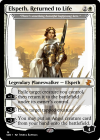 Elspeth Returned to Life b.png698.7 KB · Views: 7
Elspeth Returned to Life b.png698.7 KB · Views: 7 -
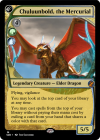 Chuluunbold the Mercurial B.png674.2 KB · Views: 7
Chuluunbold the Mercurial B.png674.2 KB · Views: 7 -
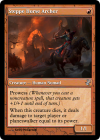 Steppe Horse Archer.png723.4 KB · Views: 4
Steppe Horse Archer.png723.4 KB · Views: 4 -
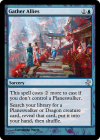 Gather Allies v2.png808.9 KB · Views: 5
Gather Allies v2.png808.9 KB · Views: 5 -
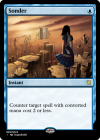 i282SrZ.png355.2 KB · Views: 5
i282SrZ.png355.2 KB · Views: 5 -
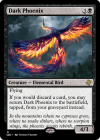 Dark Phoenix.png786.5 KB · Views: 6
Dark Phoenix.png786.5 KB · Views: 6 -
 Hymn to Silumgar.png625.1 KB · Views: 5
Hymn to Silumgar.png625.1 KB · Views: 5 -
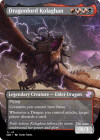 Dragonlord Kolaghan v3.png932 KB · Views: 4
Dragonlord Kolaghan v3.png932 KB · Views: 4 -
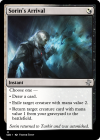 Sorins Arrival.png592.4 KB · Views: 3
Sorins Arrival.png592.4 KB · Views: 3 -
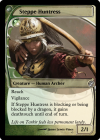 Steppe Huntress 3.png832.3 KB · Views: 7
Steppe Huntress 3.png832.3 KB · Views: 7
Cool cube! I've noticed that Angel of Exquisite Timing is lacking P/T and it felt to me that there are a lot of Blink enablers but not actually that many payoffs, but I might be wrong.
thinking more about forcing small games. i want to clean out my 2-for-1 threats but keep 2-for-1 value answers that wipe stuff off the board. feels like a rule of thumb to follow i hadn't clarified yet. therefore: nuh uh to ocelot pride, etc, but yes to the cryptic commands of the world. etc. What are some fan favourite baneslayers and cryptics?
thinking more about forcing small games. i want to clean out my 2-for-1 threats but keep 2-for-1 value answers that wipe stuff off the board. feels like a rule of thumb to follow i hadn't clarified yet. therefore: nuh uh to ocelot pride, etc, but yes to the cryptic commands of the world. etc. What are some fan favourite baneslayers and cryptics?
both in the cube! looking for cards I've overlooked.
customs spotlight and theory: counterspells
counterspells are the cleanest 1-for-1 trade in the game. they spent mana and a card, you spent mana and a card (plausibly), and nobody gets to impact the board this turn. ETB's don't happen, etc. therefore i want more countermagic in the cube generally and non blue colours specifically. I decided black oughtn't have any because it's classically used targeted discard to arrive somewhere similar (although Villain gets her mana on her turn).
white: the secondary counterspells colour. Reprieve, Mana Tithe, etc. I added some free interaction and some 'target dude has hexproof' type stuff. White's target-restricted counterspells interact with creature spells on the stack and protect your duders. EDIT: it should get duresses also i think.
blue: the primary counterspells colour. every blue deck should play counterspells.
black: nope! thoughtseize.
red: bleeding countermagic into life payment; 'redmand', Redirect Lightning, negate. tertiary in counterspells
green: even more restrictive negate effects! Protect your duders, countering instants and sorceries, or I+S + artifact spells. tertiary in counterspells.
in 500 cards, counterspell count:
 6 /
6 /  19 /
19 /  0 /
0 /  3 /
3 /  3
3
customs spotlight and theory: counterspells
counterspells are the cleanest 1-for-1 trade in the game. they spent mana and a card, you spent mana and a card (plausibly), and nobody gets to impact the board this turn. ETB's don't happen, etc. therefore i want more countermagic in the cube generally and non blue colours specifically. I decided black oughtn't have any because it's classically used targeted discard to arrive somewhere similar (although Villain gets her mana on her turn).
white: the secondary counterspells colour. Reprieve, Mana Tithe, etc. I added some free interaction and some 'target dude has hexproof' type stuff. White's target-restricted counterspells interact with creature spells on the stack and protect your duders. EDIT: it should get duresses also i think.
blue: the primary counterspells colour. every blue deck should play counterspells.
black: nope! thoughtseize.
red: bleeding countermagic into life payment; 'redmand', Redirect Lightning, negate. tertiary in counterspells
green: even more restrictive negate effects! Protect your duders, countering instants and sorceries, or I+S + artifact spells. tertiary in counterspells.
in 500 cards, counterspell count:
Last edited:
Chris Taylor
Contributor

This is a lot more flametounge than come from behind but it does technically count.

Bowmasters with all the BS sanded off in a color that wants it

When arc lightning doesn't work, threaten does. (I almost never draw cards with this)

My dear sweet boy. This thing helps so much.

